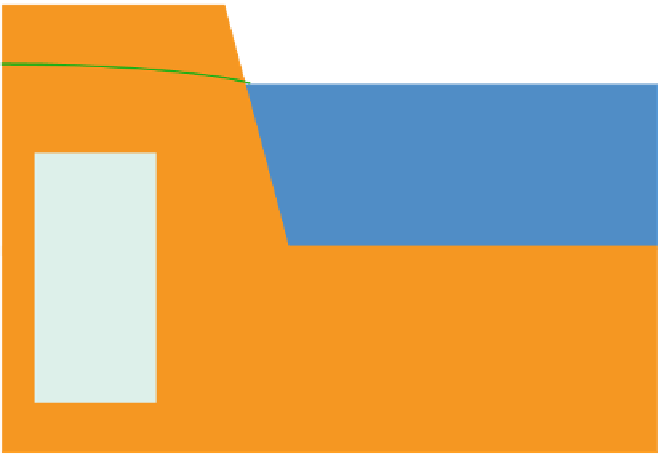Environmental Engineering Reference
In-Depth Information
processes (Hoekstra et al.
2005
; Middeldorp et al.
2002
). Also the term
Permeable
Reactive Barriers
(PRBs) became known in which also chemical conversions were
included, especially for chlorinated solvents by Zero Valent Iron (ZVI) (Gu et al.
1999
; Scherer et al.
2000
). A wide variety of PRBs is applied at field scale (Van
Nooten et al.
2008
) and in recent years the physical design such as in the Biological
Fence (Langenhoff et al.
2002
) is changed into more extensive methods like Active
Plume Management, Enhanced Bioremediation (Van Heiningen et al.
1999
), and
Natural Attenuation (Illman and Alvarez
2009
). All these methods aim at stimula-
tion and monitoring the biodegradation of contaminants in soil and groundwater. See
Chapter 22
by Peter et al., this topic, for a detailed analysis of Natural Attenuation.
Recently, new approaches have been applied in practice using Natural Attenuation
(NA) at reactive interfaces, such as between groundwater, sediment and surface
water (Fig.
21.5
) and between groundwater and air (the vadose zone of soils).
Generally speaking, the subsoil and groundwater have a lower redox potential and
oxygen level than aerobic surface waters and the water-unsaturated upper layer of
soils. Here, contaminants that migrate by diffusion or convection from the anaerobic
compartment (groundwater, sediment) to the aerobic receptor (vadose zone/indoor
air, surface water), may become biodegradable and can be removed from air and
water by natural biodegradation processes (De Weert et al. 2008; Middeldorp et al.
2005
), (
http://www.vito.be/sedbarcah
), (Abreu and Johnson
2006
; Abreu et al.
2009
;
Devaull
2007
). More laboratory, field and modelling research is required for the safe
and effective use of these NA-interface approaches.
Regularly updated information on path oriented In Situ technologies is presented
at several websites such as Eurodemo (
http://www.eurodemo.info
/).
anaerobic
groundwater
anaerobic
groundwater
interface
interface
aerobic
aerobic
aerobic
surface water
aerobic
surface water
H
+
, Cl
-
, CO
2
, H
2
O
H
+
, Cl
-
, CO
2
, H
2
O
(mobile
aliphatics)
(mobile
aliphatics)
interface
interface
aerobic biodegradation
aerobic biodegradation
HO
HO
Cl
Cl
Cl
Cl
Cl
Cl
anaerobic
groundwater
anaerobic
groundwater
(chlorophenol)
(chlorophenol)
(monochloro-
benzene)
(monochloro-
benzene)
(benzene)
(benzene)
(vinylchloride)
(vinylchloride)
influx of compounds,which are recalcitrant under anaerobic conditions
(including anaerobic biodegradation products of highly chlorinated compounds)
influx of compounds,which are reca lcitrant under anaerobic conditions
(includinganaerobic biodegradation products of highly chlorinated compounds)
Fig. 21.5
Natural Attenuation at the groundwater-surface water interface



































Search WWH ::

Custom Search